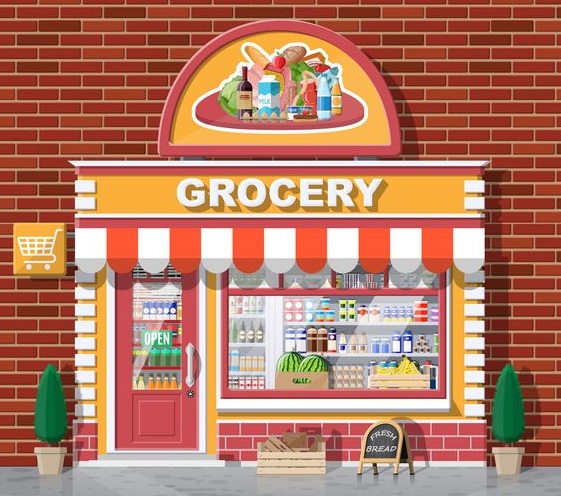This handy Spectrum Math Grade 7 Answer Key Chapter 4 Lesson 4.6 Problem Solving provides detailed answers for the workbook questions.
Spectrum Math Grade 7 Chapter 4 Lesson 4.6 Problem Solving Answers Key
Proportional relationships can be used to solve ratio and percent problems.
Mika’s lunch costs $ 12.50. She wants to leave an 18% tip. How much should she leave?
Set up a proportion. \(\frac{x}{12.50}\) = \(\frac{18}{100}\)
Solve for the variable. 225 = 100x
So, Mika should leave a $2.25 tip. 2.25 = x
Solve each problem.
Question 1.
A store is having a 25% off sale. If an item originally cost $ 19.36, how much should be taken off the price?
_____ should be taken off the original price.
Answer: $ 4.84 should be taken off the original price.
A store is having a 25% off sale.
An item originally cost $ 19.36
Proportional relationships can be used to solve ratio and percent problems.
Now, write a proportion using the above information
\(\frac{x}{19.36}\) = \(\frac{25}{100}\)
By solving the above equation,
x = \(\frac{25}{100}\) × 19.36
x = $ 4.84
Therefore, $ 4.84 should be taken off the original price.
Question 2.
Dario bought a new bike for $90.00. Sales tax is 5\(\frac{1}{2}\)%. How much tax does he have to pay? How much is his total bill?
Dario’s tax is _____.
Dario’s total bill is ______
Answer: Dario’s tax is $ 4.95
Dario’s total bill is $ 94.95
Dario bought a new bike for $90.00.
Sales tax is 5\(\frac{1}{2}\)%.
Proportional relationships can be used to solve ratio and percent problems.
Now, write a proportion using the above information
\(\frac{x}{90}\) = 5\(\frac{1}{2}\)%
\(\frac{x}{90}\) = \(\frac{11}{2}\)%
\(\frac{x}{90}\) = \(\frac{11}{2}\) × \(\frac{1}{100}\)
\(\frac{x}{90}\) = \(\frac{11}{200}\)
By solving the above equation,
x = \(\frac{11}{200}\) × 90
x = $ 4.95
Dario’s tax is $ 4.95
Therefore, Dario’s total bill is 90 + 4.95 = $ 94.95
Question 3.
A flower arrangement has 8 carnations for every 4 roses. There are 14 carnations. How many roses are in the arrangement?
There are ____________ roses in the arrangement.

Answer: There are 7 roses in the arrangement.
A flower arrangement has 8 carnations for every 4 roses.
There are 14 carnations.
Proportional relationships can be used to solve ratio and percent problems.
Now, write a proportion using the above information
\(\frac{x}{14}\) = \(\frac{4}{8}\)
By solving the above equation,
x = \(\frac{4}{8}\) × 14 = 7 roses
Therefore, There are 7 roses in the arrangement.
Question 4.
There are 18 girls in the school choir. The ratio of girls to boys is 1 to 2. How many boys are in the choir?
There are ____________ boys in the chair.
Answer: There are 9 boys in the chair.
There are 18 girls in the school choir.
The ratio of girls to boys is 1 to 2.
Proportional relationships can be used to solve ratio and percent problems.
Now, write a proportion using the above information
\(\frac{x}{18}\) = \(\frac{1}{2}\)
By solving the above equation,
x = \(\frac{1}{2}\) × 18 = 9 boys
Therefore, There are 9 boys in the chair.
Question 5.
A baseball player strikes out 3 times for every 2 hits he gets. If the player strikes out 15 times, how many hits does he get? If the player gets 46 hits, how many times does he strike out?
The player gets ____ hits for every 15 minutes he strikes out.
If the player gets 46 hits, he strikes out ____ times.
Answer: The player gets 10 hits for every 15 minutes he strikes out.
If the player gets 46 hits, he strikes out 69 times.
A baseball player strikes out 3 times for every 2 hits he gets.
If the player strikes out 15 times:
Proportional relationships can be used to solve ratio and percent problems.
Now, write a proportion using the above information
\(\frac{x}{15}\) = \(\frac{2}{3}\)
By solving the above equation,
x = \(\frac{2}{3}\) × 15 = 10 hits
Therefore, The player gets 10 hits for every 15 minutes he strikes out.
If the player gets 46 hits:
Proportional relationships can be used to solve ratio and percent problems.
Now, write a proportion using the above information
\(\frac{x}{46}\) = \(\frac{3}{2}\)
By solving the above equation,
x = \(\frac{3}{2}\) × 46 = 69 times
Therefore, If the player gets 46 hits, he strikes out 69 times.
Solve each problem.
Question 1.
Mr. Johnson borrowed $750 for 1 year. He has to pay 6% simple interest. How much interest will he pay?
Mr. Johnson will pay _____________ in interest.
Answer:
Mr. Johnson borrowed $750 for 1 year.
He has to pay 6% simple interest.
Proportional relationships can be used to solve ratio and percent problems.
Now, write a proportion using the above information
\(\frac{x}{750}\) = \(\frac{6}{100}\) × 1
By solving the above equation,
x = \(\frac{6}{100}\) × 750 = $45
Therefore, Mr. Johnson will pay $45 in interest.
Question 2.
Mrs. Soto invested in a certificate of deposit that pays 8% interest. Her investment was $325. How much interest will she receive in year?
Mrs. Soto will receive _____________ in interest.
Answer: Mrs. Soto will receive $26 in interest.
Mrs. Soto invested in a certificate of deposit that pays 8% interest.
Her investment was $325 in a year
Proportional relationships can be used to solve ratio and percent problems.
Now, write a proportion using the above information
x = \(\frac{8}{100}\) × 325 × 1
x = $26
Therefore, Mrs. Soto will receive $26 in interest.
Question 3.
Andrea put $52 in a savings account that pays 4% interest. How much interest will she earn in 1 year?
Andrea will earn _____________ in interest.
Answer: Andrea will earn $2.08 in interest.
Andrea put $52 in a savings account that pays 4% interest for 1 year
Proportional relationships can be used to solve ratio and percent problems.
Now, write a proportion using the above information
x = \(\frac{4}{100}\) × 52 × 1
x = $2.08
Therefore, Andrea will earn $2.08 in interest.
Question 4.
Jonas purchased a 2-month (3\(\frac{1}{2}\) year) certificate of deposit. It cost $600 and pays 7% interest each year. How much interest will he get? How much will the certificate be worth when he cashes it in?
Jonas will get _____________ in interest.
The certificate will be worth _____.
Answer: Jonas will get $147 in interest.
And the certificate will be worth = $747
Jonas purchased a 2-month (3\(\frac{1}{2}\) year) certificate of deposit.
It cost $600 and pays 7% interest each year.
Proportional relationships can be used to solve ratio and percent problems.
Now, write a proportion using the above information
x = \(\frac{7}{100}\) × 600 × 3\(\frac{1}{2}\)
x = \(\frac{7}{100}\) × 600 × \(\frac{7}{2}\)
x = \(\frac{7 × 600 × 7}{2 × 100}\)
by simplification,
x = $147
Therefore, Jonas will get $147 in interest.
And the certificate will be worth = 600 + 147 = $747
Question 5.
Rick borrowed $50 from his sister for 3 months (\(\frac{1}{4}\) year). She charged him 14% interest. How much does Rick have to pay to his sister?
Rick must pay his sister a total of _____.
Answer: Rick must pay his sister a total of $51.75
Rick borrowed $50 from his sister for 3 months (\(\frac{1}{4}\) year).
She charged him 14% interest.
Proportional relationships can be used to solve ratio and percent problems.
Now, write a proportion using the above information
x = \(\frac{14}{100}\) × 50 × \(\frac{1}{4}\)
x = \(\frac{14 × 50 × 1}{4 × 100}\)
by simplification,
x = $1.75
Therefore, Rick must pay his sister a total of 50 + 1.75 = $51.75
Question 6.
The grocery store borrowed $ 15,000 to remodel. The term is 7 years and the yearly interest rate is 4\(\frac{1}{4}\)%.
How much interest will the store pay? What is the total amount to be repaid?

The store will pay _____________ in interest.
The total amount to be repaid is _____.
Answer: The store will pay $4462.5 in interest.
The total amount to be repaid is $19462.5
The grocery store borrowed $ 15,000 to remodel. The term is 7 years and the yearly interest rate is 4\(\frac{1}{4}\)%.
Proportional relationships can be used to solve ratio and percent problems.
Now, write a proportion using the above information
x = 4\(\frac{1}{4}\) %× 15000 × 7
x = \(\frac{17}{4}\) %× 15000 × 7
x = \(\frac{17}{4}\) × \(\frac{1}{100}\) × 15000 × 7
x = \(\frac{17}{400}\) × 15000 × 7
By simplification,
x = $4462.5
Therefore, The store will pay $4462.5 in interest.
The total amount to be repaid is 15000 + 4462.5 = $19462.5
